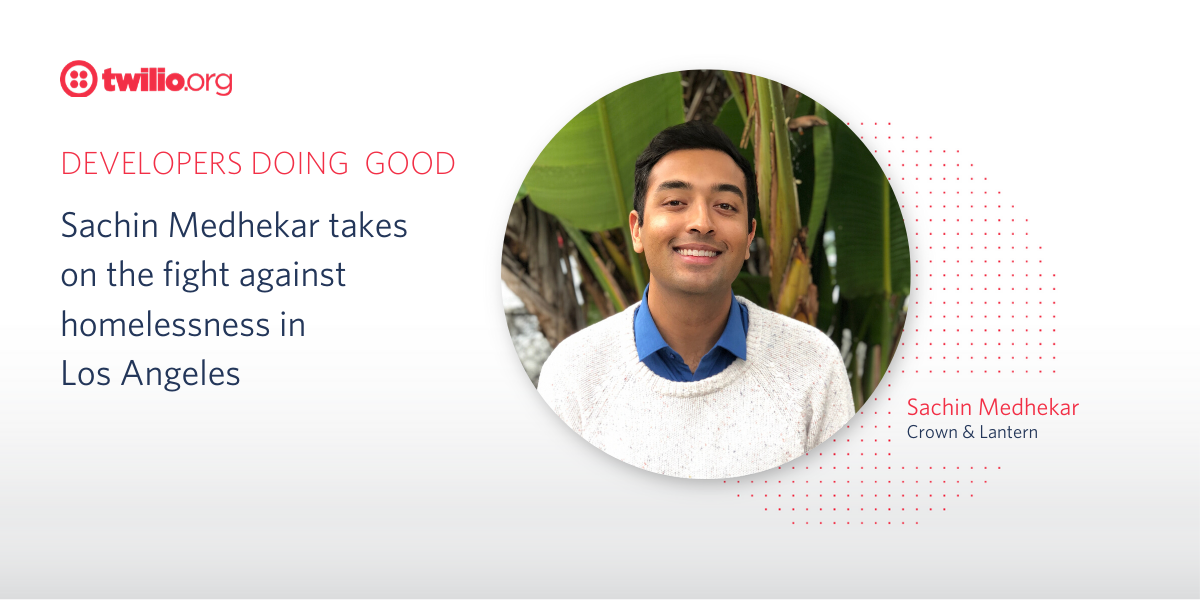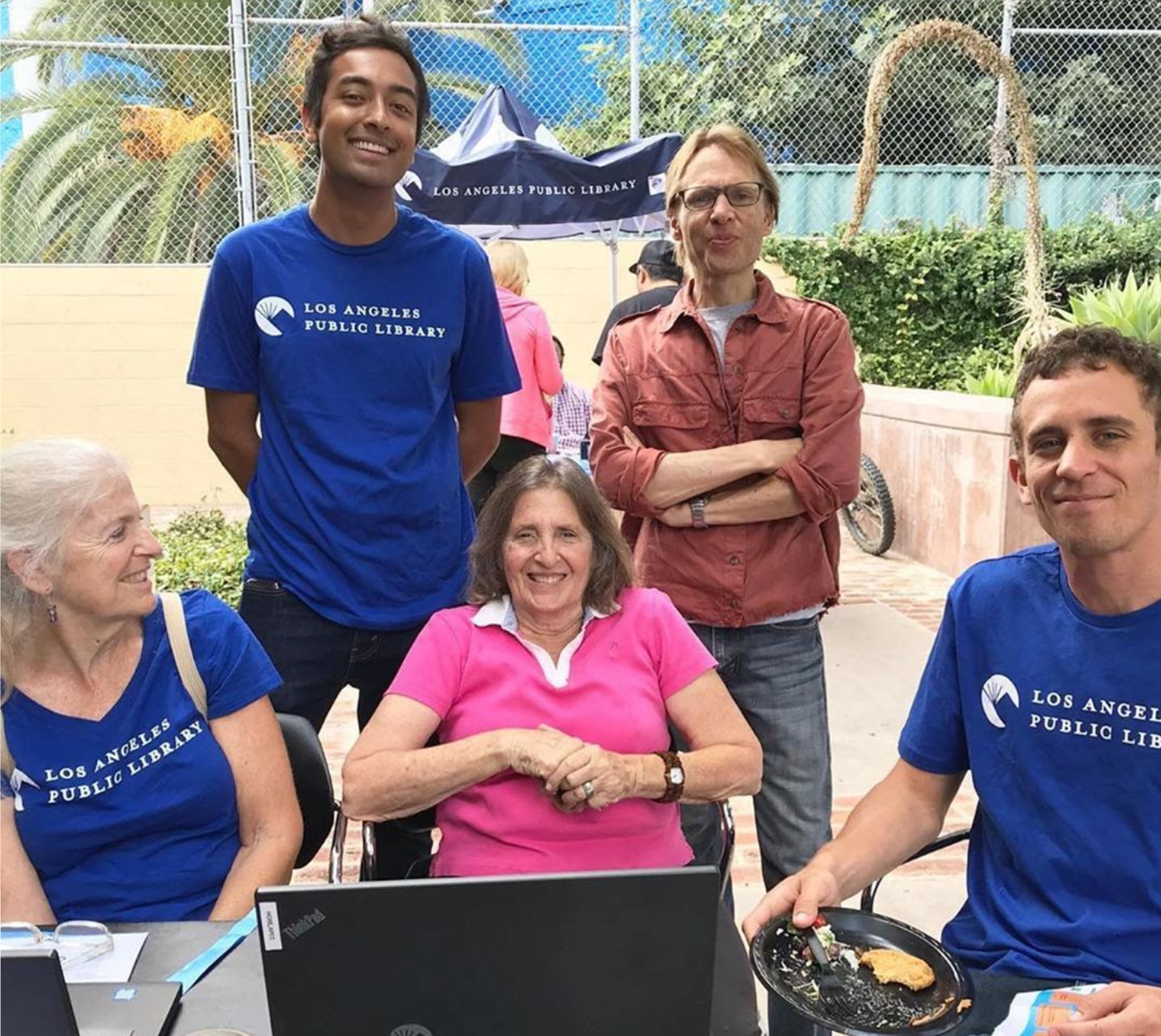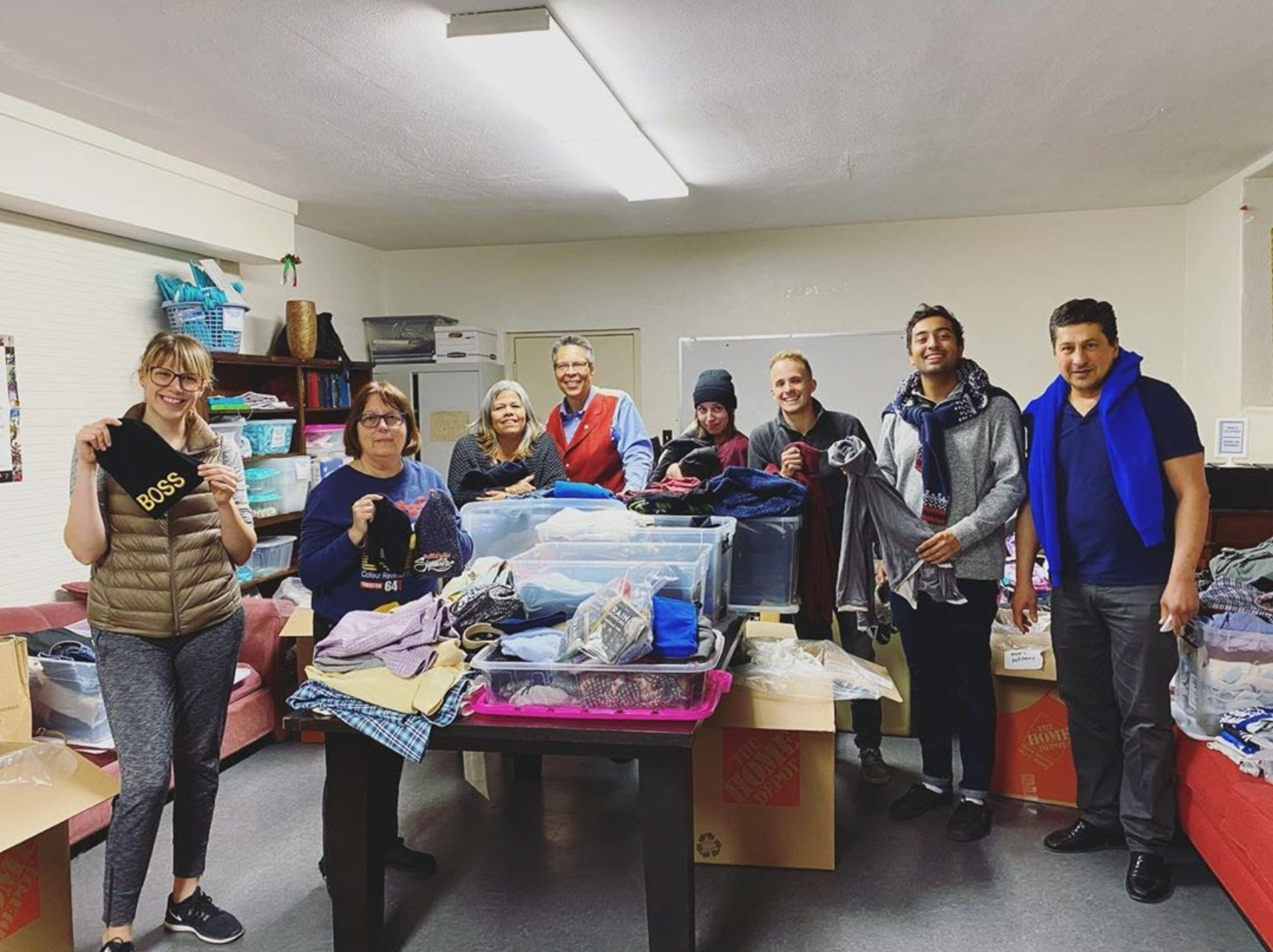Developers Doing Good: Sachin Medhekar Takes on the Fight Against Homelessness in Los Angeles
Time to read:
This post is part of Twilio’s archive and may contain outdated information. We’re always building something new, so be sure to check out our latest posts for the most up-to-date insights.

Today, we’re highlighting a developer that didn’t just see a growing problem of homelessness in his home city of Los Angeles. He put his skills to work to address the problem. Read on to learn how Sachin Medhekar built a messaging platform using Twilio Programmable SMS to keep people experiencing homelessness and rent insecurity up to date on critical support services.
Tell us about you. Where are you from? What’s your day job?
Hello! My name is Sachin Medhekar. I’m from Laguna Niguel, a suburb near Dana Point in Southern California. For the past several years, I’ve run a software design and development studio here in Los Angeles focusing mostly on launching MVPs (minimum viable products) for startups. More recently, I’ve begun doing innovation consulting for civic and nonprofit companies.
How did you start to get involved volunteering with the people experiencing homelessness in LA? Why is this an important issue for you?
I had always been interested in working on humanitarian and social issues, but I wasn’t sure where to start or what to focus on. Living here in LA, though, it soon became apparent for me that homelessness was the most dire crisis facing the city. We’re in one of the wealthiest places in the world, yet three people are dying every day on the streets. With this reality at my front door, I felt that there had to be some way for me to get involved.
The path I found started through the neighborhood council system, basically local government, here in Echo Park. I was elected to the board and began serving on the homelessness committee. I started learning about other groups and nonprofits, like the SELAH Neighborhood Homeless Coalition and The Source at the local library. I began regularly volunteering and became much more active in the space.

Sachin volunteers for SELAH, an organization addressing homelessness in Los Angeles.
How did you uncover a need for using technology in your volunteer work?
I didn’t initially go into this looking for a way to use technology. I simply saw a problem first. This happened while volunteering for The Source at my local library, an event that provides people experiencing homelessness with hot meals, hair cuts, and opportunities to connect with service providers.
One of the ways I would volunteer for this event is that I would show up early and do what’s called “outreach and engagement.” Basically, I would bring water and resource information out to all the local encampments and talk with people one-on-one. I let them know about the services we were offering that day at the library and how to get there.
During the event, I would check-in with the people who came to receive services. I started to notice that a large percentage of the people who showed up were simply the folks I had talked to that morning. It became clear to me this kind of outreach was extremely effective but was limited to the number of people I was physically able to talk to each morning. Seeing this bottleneck prompted me to think of ways to share that information more broadly.
I settled on the idea of SMS messages because I saw that most folks had some kind of phone, and it felt like texts would be an accessible medium for most people versus something like an app or website which would require internet access and more technical familiarity.
I started getting input from everyone about it: people seeking services as well as the people hosting the events. Both program organizers and participants were very receptive to the idea, so I started building out the platform.

Volunteers at the Los Angeles Public Library
Tell us about what you built.
I built a platform that connects service providers with people experiencing homelessness. People experiencing homelessness can sign up and begin to receive daily text messages whenever there are services being offered near them. For example, haircuts, showers, laundry days, and case management.
I work with service providers to maintain a calendar of these resources and to enroll more participants. Since I launched the product, I’ve also been approached by different nonprofits who wanted me to expand the tool to fit their needs. I’m currently working with an incredible nonprofit called Safe Parking LA. I’ve customized the tool so they can use it not only to broadcast messages but also to communicate back and forth with their clients. I’ve also begun working on ways to build emergency alerts into the platform so people can be notified if there is a flood or an earthquake.
I built this with the stack that I am personally most familiar with: I wrote it in Node.js and used the Twilio-node library. It’s hosted on Heroku. I use MongoDB with Mongoose for the object models. I use Express for the API routes. I also use a Google Calendar integration so the app can scan through a calendar of services to craft and send the messages out.
Why did you choose to work with Twilio?
In my professional background helping companies launch software products, I had used Twilio multiple times and am a big fan of the service as it is affordable and easy to integrate. My familiarity with Twilio helped empower me to build this since it didn’t feel like I had to start from scratch.
How has your project impacted the lives of people experiencing homelessness?
My goal for the project is to increase awareness of the services being offered and to help connect people to the resources that they need. I’ve heard from the various service providers promoted on the platform that people receiving the messages often account for 30-50% of overall attendance and have increased overall participation quite a bit. Currently, I send out over 4,000 messages a month. Through these services, people are able to connect with case workers and resources that can often provide immediate help as well as accelerate the process of getting housing.
One example that I love comes from a group that I am an organizer with called SELAH. We host an event every Saturday and there’s an older gentleman who comes to our program regularly. He thinks I personally send out the texts and thanks me every time he sees me. It's great to know that the messages are helping connect him to useful resources, such as meals and showers, as he navigates the process of securing permanent housing.
How could readers get involved in helping to address this issue?
A really helpful start is getting educated about the facts around homelessness as there are a lot of misconceptions. Over 50% of people experiencing homelessness in Los Angeles and San Francisco do not have a mental health problem, and over 50% do not have a substance abuse problem. Over 60% of people experiencing homelessness in San Francisco have been there for over 5 years. For Los Angeles, 65% have been living there for over 10 years. (Sources: San Francisco 2019 Homeless Count, Los Angeles 2019 Homeless Count)
Most people have an idea of what homelessness looks like, but that idea is often very narrow, and usually lacks empathy for an individual's experience or history. For instance, I work with a 74-year-old woman whose husband’s death forced her to live in her car since he was the primary income earner. She's not on the street because of choices she made. She's there because the system failed her. Everyone has their own unique story and journey, and I think it’s important to keep that in mind.
One thing that everyone can do is support more low income and supportive housing developments in their neighborhoods. I’d also recommend voting for legislators who offer compassionate approaches to homelessness, rather than criminalization. Vote for people who will bring services and housing to your area. You can also get involved in local nonprofits and meet people experiencing homelessness one on one.

Packing supplies and kits for people experiencing homelessness in Los Angeles
What would you say to other developers out there about opportunities to use their skill set for good?
The best place to start is by getting informed. No matter what your cause is, try to get involved with groups on the ground doing the work. Become familiar with what problems they are facing. There’s a lot of goodwill in the developer community, but oftentimes there’s overlap in the work that’s being done or there are solutions being created without a true understanding of the problems. Really understanding the space is key to getting the solution right. Also, make sure to validate ideas with stakeholders and constantly solicit feedback from them.
Nonprofits are so focused on the mission they are trying to achieve that they may not have a lot of energy to put into technological innovation. Sometimes, though, you can save a nonprofit a lot of time by just suggesting small changes like using Google Docs. I’d encourage developers to try and identify small incremental changes like this, in addition to recommending larger software platforms and projects.
Thank you to Sachin for his time chatting with us and his work using his developer skill set for good. If you know a nonprofit who could use Twilio’s technology, make sure to let them know about our Impact Access program that gives social impact organizations access to technical support, $500 in kickstart credits, and additional discounts on Twilio products. Here is the link to share: https://twilio.org/benefits
Related Posts
Related Resources
Twilio Docs
From APIs to SDKs to sample apps
API reference documentation, SDKs, helper libraries, quickstarts, and tutorials for your language and platform.
Resource Center
The latest ebooks, industry reports, and webinars
Learn from customer engagement experts to improve your own communication.
Ahoy
Twilio's developer community hub
Best practices, code samples, and inspiration to build communications and digital engagement experiences.


